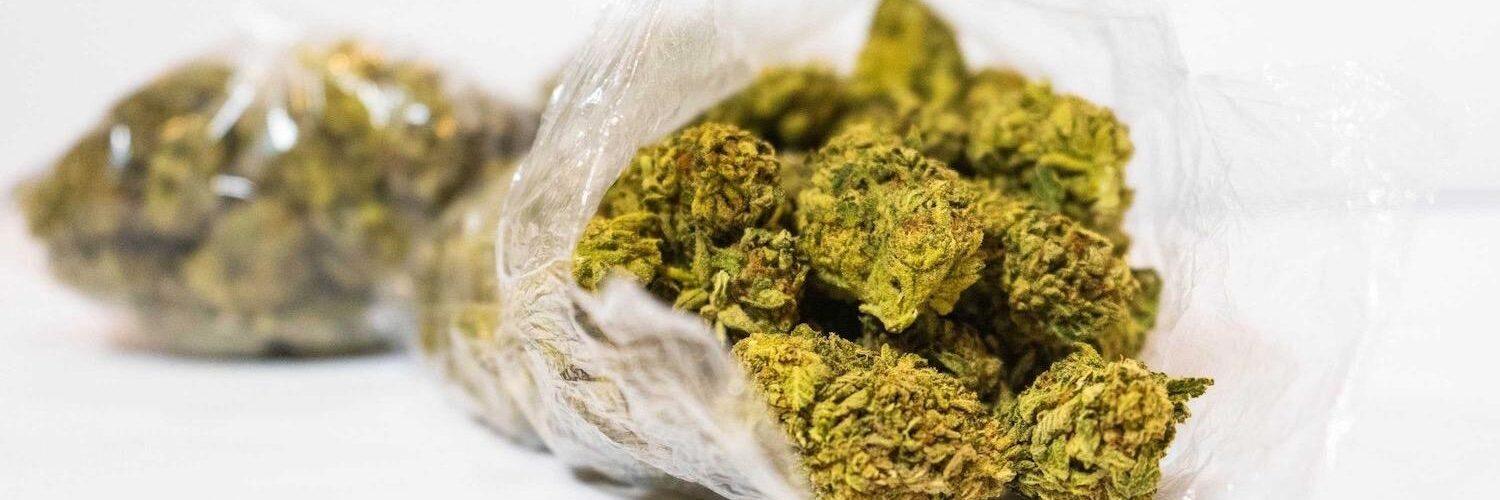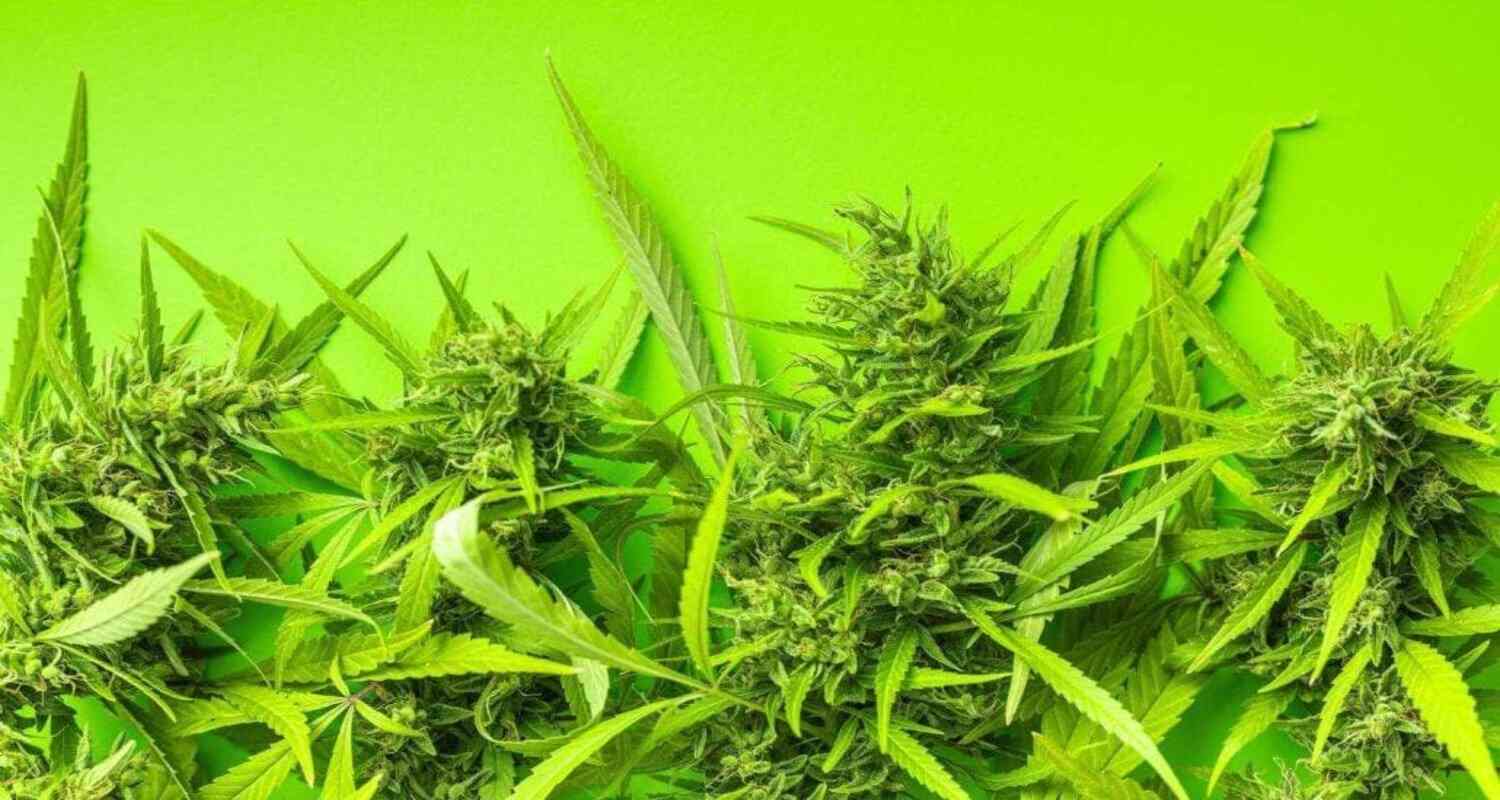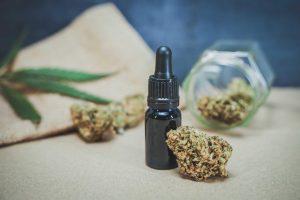- John DiBella
- Published: March 2, 2022
- Updated: March 10, 2024
- Fact-checked by Dr. Desiree Granados

In the diverse world of cannabis, two primary types of weed stand out for their distinct effects and physical characteristics: indica and sativa. These two strains not only shape each user’s experience, but also guide growers and connoisseurs in their cannabis cultivation.
This article will demystify these popular strains by exploring their characteristics, effects, and benefits, providing you with the knowledge you need to make informed decisions about your cannabis use.
What Is Indica Cannabis?
Origins
Indica cannabis, originating from the Middle East, is one of the primary strains of the cannabis plant. Characterized by their short, bushy appearance, indica strains are known for their broad leaves and dense, compact flower clusters.
Effects
This variant of cannabis is often sought after for its deeply relaxing effects, making it a popular choice for evening use. Users of indica strains typically report a strong sense of physical relaxation, which can reduce stress, alleviate pain, and promote better sleep.
Side Effects
While indica cannabis is appreciated for its relaxing and therapeutic benefits, it is important to be aware of potential side effects that some users may experience. These include:
- Dizziness
- Impaired motor skills
- Lethargy
- Short-term memory impairment
- Sluggishness
What Is Sativa Cannabis?
Origins
Sativa cannabis, believed to have originated in Eastern Asia, is now cultivated worldwide, particularly in regions close to the equator. It thrives in warm climates with long, sunny days, and is known for its tall, slender plant structure.
Effects
Sativa strains are renowned for stimulating the mind, enhancing creativity, and increasing focus and alertness. Many users report a “head high,” or an energizing effect, making sativa a popular choice for daytime use. It’s often sought after by individuals looking to alleviate symptoms of depression, ADHD, and fatigue.
Side Effects
Some of the various side effects of indica strains include:
- Anxiety and paranoia
- Difficulty sleeping
- Increased heart rate
- Nausea
- Tremors

What Are the Differences Between Indica and Sativa Strains?
Some of the most prominent differences between indica and sativa strains include:
- Appearance: Indica plants are typically shorter and bushier, with broader leaves, while sativa plants are taller and leaner with narrow leaves.
- Growing Conditions: Indica strains tend to thrive in cooler climates, requiring a shorter growing cycle, while sativa strains do better in warmer climates and require more time to mature.
- Effects: Indica strains are often associated with a more relaxing, body-centric effect, making them popular for nighttime use. In contrast, sativa strains are known for producing an uplifting, energetic, and cerebral high, which is why they’re preferred for daytime activities.
- Medical Uses: Indicas are frequently used to address issues like pain, insomnia, and anxiety due to their sedative qualities. Sativas, on the other hand, may help with depression, ADHD, and mood disorders thanks to their energizing effects.
- THC and CBD Content: Indica strains generally contain higher levels of CBD, meaning they can be less psychoactive than sativas. However, this can vary from strain to strain.
What Are Indica/Sativa Hybrid Strains?
Hybrid cannabis strains are cultivated by crossbreeding indica and sativa strains. Growers create them in hopes of producing unique combinations that feature desirable traits from both indicas and sativas.
Hybrids can be indica-dominant, sativa-dominant, or balanced, and they offer a wide range of effects, aromas, and flavors. These versatile plants cater to all kinds of users’ medical needs and personal preferences.
Do You Feel More High with Indica or Sativa?
Indica and sativa strains produce different “highs” due to their unique compositions. Sativa strains are known for their energizing effects, which makes them ideal for daytime use. On the other hand, indica strains tend to bring on a more sedative effect that’s often described as a “body high,” making them better suited for relaxation and sleep.
Therefore, whether you feel “more high” with indica or sativa largely depends on your sensitivity to these effects and what you’re seeking from your weed.
Which Is Better: Indica or Sativa?
The answer as to whether indica or sativa is the superior cannabis strain depends largely on personal preference. Both types of cannabis offer their own unique benefits and drawbacks. Ultimately, the best cannabis strain for you will depend on your own personal experiences and the effects you’re seeking to achieve.
Conclusion
Navigating today’s vast landscape of cannabis strains can be an exciting journey. Whether you gravitate toward the soothing calm of indica, the energizing buzz of sativa, or the balanced harmony of hybrid strains, the key lies in understanding your own preferences and the specific outcomes you want to achieve.
Experimenting under safe and legal conditions can help you discover the perfect strain for your lifestyle and wellness goals, and the Sanctuary Wellness Institute is ready to help you obtain your medical marijuana card so you can do just that.
States Where We Offer Medical Marijuana Card Services
How we reviewed this article:
- Danielle Dresden (2024). What’s the difference between indica and sativa?
https://www.medicalnewstoday.com/articles/indica-vs-sativa - Flower Power Botanicals (2021). Exploring the Benefits of Cannabis Indica
https://flowerpowerbotanicals.com/exploring-the-benefits-of-cannabis-indica-medicinal-and-recreational-uses/ - Terrabis (2023). What Does Cannabis Indica Do For You?
https://www.terrabis.co/education/what-does-cannabis-indica-do-for-you/ - Amanda Stevens (2022). Sativa, Indica, Hybrid Cannabis: What They Are, Side Effects, & Risks of Using
https://www.infiniterecovery.com/addiction-recovery/sativa-indica/ - Ziyan Xie, Yaolei Mi, Lingzhe Kong, Maolun Gao, Shanshan Chen, Weiqiang Chen, Xiangxiao Meng, Wei Sun, Shilin Chen, & Zhichao Xu (2023).
https://academic.oup.com/hr/article/10/9/uhad150/7231120 - Naveed Saleh (2023). Indica vs. Sativa: What’s the Difference?
https://www.verywellhealth.com/indica-vs-sativa-1123887 - Salisbury (2021). Indica vs Sativa
https://salisburygreenhouse.com/indica-vs-sativa/ - Footprints to Recovery (2024). What Are the Effects of Indica vs. Sativa?
https://footprintstorecovery.com/plant-herbal-drug-category/cannabis-cannabis-sativa-try/ - Greenleaf Medical Clinic (2024). Sativa vs. Indica
https://greenleafmc.ca/our-learning-centre/sativa-vs-indica - Gillian May (2024). 6 Crucial Inputs for Optimal Sativa Cannabis Cultivation
https://aroya.io/en/knowledge-base/education-guides/6-crucial-inputs-optimal-sativa-cannabis-cultivation - Kimberly Holland (2023). Sativa vs. Indica: What to Expect Across Cannabis Types and Strains
https://www.healthline.com/health/sativa-vs-indica - Canabo Medical Corp (2024). The Different Cannabis Strains and Their Effects
https://cmclinic.ca/blog/indica-sativa-hybrid/
Current Version
March 10, 2024
Written By
John DiBella
Fact-checked By
Dr. Desiree Granados
Editorial Process
Our Editorial Process
First Published
December 2, 2022
Written By
Jake Peter
Fact-checked By
Dr. Desiree Granados
Editorial Process
Our Editorial Process

John DiBella is the co-founder and CEO at The Sanctuary Wellness Institute. His goal is to foster healthier lifestyles to improve individuals’ quality of life and health span through online medical and non-medical services. When he’s not writing health & wellness articles for The Sanctuary, he enjoys hiking, camping, surfing and sailing.







